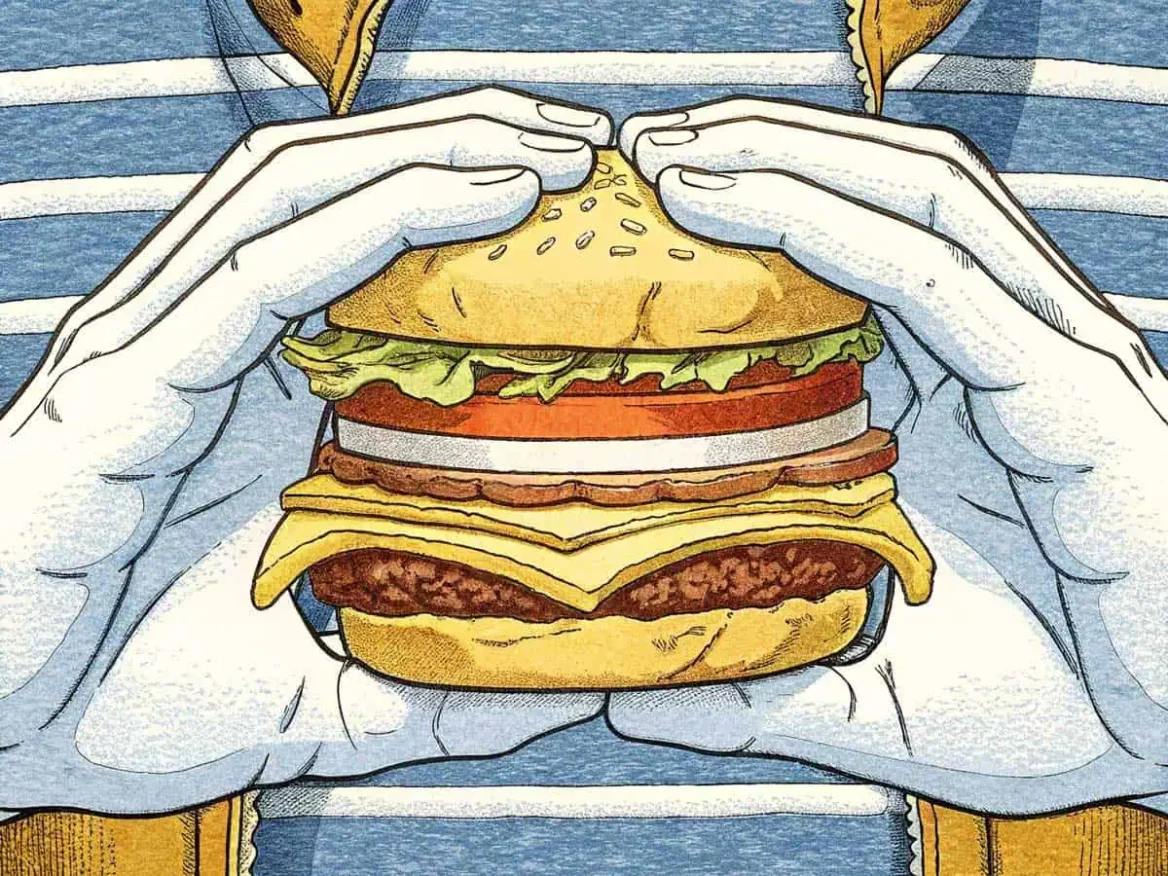In this article, I explain how McDonald’s Big Mac brand was unexpectedly threatened by lapse notice. The case demonstrates how even a world-famous brand can be endangered by lack of proper evidence of genuine use.
Well-known brands such as HEMA and Kruidvat enjoy a larger scope of protection in the Benelux than other brands because they are known to a significant part of the Benelux public for whom the brand is intended.
The advantage of having a ‘well known mark’ is that its scope of protection is broader. It is therefore easier to take action against signs and/or marks that take unfair advantage of and/or are detrimental to the distinctive character and/or reputation of the well-known mark without due cause.
Brands known worldwide
Just as a brand may be known in the Benelux, it may also be known within the European Union or even worldwide. Worldwide well-known trademarks include Coca-Cola, Apple, Adidas and Nike. With these trademarks – even more so than with Benelux well-known trademarks – infringement is more likely to be assumed. Well-known trademarks which, moreover, are often defended tooth and nail by their owners against (alleged) infringers worldwide.
For instance, Adidas is known for taking the protection of its three-stripe trademark very seriously and (often) successfully tackling any alleged infringement of it, anywhere in the world.
Less deep pockets
Most (smaller) parties (without a well-known trademark) have less deep pockets than holders of well-known trademarks. Thus, a proprietor of a well-known trademark can usually suffice with threatening legal action to ensure that the party without a well-known trademark complies with the wishes of the well-known trademark owner.
Those claims usually involve the cessation of the use of the allegedly infringing sign and/or mark and compensation for damages for the use of the infringing sign and/or mark up to that point.
Therefore, the situation where a smaller party (without a well-known trademark) actively pressures the proprietor of a well-known trademark with a claim that concerns the well-known trademark is rare if ever.
Financial suicide
Indeed, this is more or less tantamount (in most cases) to financial suicide, which no entrepreneur wants. And yet, a case recently (11 January this year) has emerged in which a smaller party has had the audacity to take on a proprietor of a well-known trade mark, and it has also done so – much to the surprise of many, including the undersigned – with (provisional) success (The European Union Intellectual Property Office (EUIPO) dated 11 January 2019 on Supermac’s (Holdings) Ltd v McDonalds’s International Property Company, Ltd (EUIPO, Cancellation No 14 788 C, 11/01/2019.)
Supermac’s in trouble
Irish fast-food chain Supermac’s was bothered by the trademark of one of McDonald’s burgers, namely the Big Mac burger. To get this mark taken off the table, Supermac’s filed an action with the European Union Intellectual Property Office (EUIPO) for revocation of BIG MAC for not using it in a normal manner for more than five years in the European Union.
Before we look more concretely at what happened in this episode of David and Goliath, first a brief explanation of what constitutes genuine use of a trademark and how EUIPO assesses whether there is genuine use.
Normal use
Genuine use of a trademark (whether well-known or not) occurs ‘when a trademark is used to find or maintain an outlet for the marked goods or services’.
Assessing normal use involves looking at all the relevant facts and circumstances of the case. This involves, among other things, answering the following questions:
- what is common in the relevant economic sector in terms of brand use to maintain and/or gain market share?
- what is the nature of the goods and services?
- how often is the brand actually used?
In addition, whether a trademark is used normally also depends heavily on the type of product and/or service for which the trademark is used.
Highly product-dependent
To illustrate, if a company sells pianos, bearing a trademark, the answer to the question of whether there is genuine use of this ‘piano trademark’ will soon be in the affirmative when selling two or three pianos a year.
This will be different in the case of using a particular brand of beer. In the case of this type of product, sales of a few thousand bottles per week should soon be considered.
When the owner of a well-known trademark is confronted with a request to cancel it for non-use, it will not be easily impressed – even taking into account the above rules. After all, a well-known trademark almost automatically entails that it is also used normally. This is obvious from the outset… right?
Big Mac declared expired?
This must undoubtedly have been McDonald’s thinking when Supermac’s knocked on EUIPO’s door to report that McDonald’s Union trademark Big Mac has not been in genuine use for the past five years for goods and services in Classes 29 and 30 (short for sandwiches) and 42 (short for services relating to franchised restaurants).
For this reason, Supermacs said, the Big Mac trade mark should be declared revoked under Article 58(1)(a) of the Union Trade Mark Regulation.
A striking proposition considering this is an (almost) iconic product that McDonald’s has been selling worldwide since 1968. If Wikipedia is to be believed, Big Mac, ‘one of the company’s signature products’, has been advertised since 1969. So proving genuine use of the Big Mac brand by McDonald’s cannot be a problem, at least it seems so.
Proof of normal use
In the case of an application for revocation on the ground of lack of genuine use, the proprietor of the Union trade mark under challenge shall furnish proof of genuine use. That evidence is subject to the condition that at least the following factors must be apparent from it: the place, time, extent and manner of use of the trade mark for the goods and services for which it is registered.
These factors are cumulative. Thus, providing evidence of genuine use of the Big mac trade mark during the years 2012 to 2017 should be a breeze for McDonald’s. After all, the concern, founded in 1955, is widely known and advertises all its products extensively, including the BIG MAC burger.
High confidence
Taking the above into consideration, McDonald’s (so we imagine) confidently sent its proof of normal use to the EUIPO. This evidence consisted of:
- three affidavits relating to the sales numbers of the BIG MAC in the period from 2011 to 2016;
- brochures and advertising posters relating to BIG MAC from the period from 2011 to 2016 and copies of (McDonald’s) websites from 18 different countries relating to the years 2014 to 2016;
- A copy of the English Wikipedia page on the BIG MAC burger.
EUIPO ‘was not lovin’ it’ and ruled that the evidence was insufficient. No doubt (so we imagine here too) to the dismay of McDonald’s.
To be considered only in context
Regarding the statements, EUIPO argues that their value can only be assessed in conjunction with the other evidence.
That the statements come from representatives of McDonald’s companies in Germany, France and the UK means that they are generally given less weight as independent evidence, given the interests of the witnesses that are related to those of McDonald’s.
The Wikipedia page is entirely (understandably as far as we are concerned) bypassed by EUIPO. This information cannot be seen as reliable as it can be modified by any user of Wikipedia, EUIPO says. Of particular importance, therefore, are the brochures, advertising posters and copies of the websites for proving McDonald’s genuine use of the BIG MAC trade mark.
However, with regard to this evidence, EUIPO considers that none of these exhibits show:
- how many BIG MAC burgers were actually offered to the public;
- how long this offer lasted;
- whether this offer resulted in actual sales;
- how many BIG MAC burgers were actually ultimately sold in the relevant period.
Inadequate evidence
In short, McDonald’s evidence – particularly on the extent of use of the mark – falls short.
Finally, as regards evidence of genuine use of the mark for Class 42 (services relating to franchised restaurants), EUIPO concludes that evidence of this is entirely lacking. The consequence of this exercise is that the affidavits – by themselves – cannot provide sufficient evidence to support McDonald’s claim of genuine use.
Supermac’s claim for revocation of the BIG MAC trade mark for lack of genuine use is therefore upheld.
EUIPO does still – very kindly – explain to McDonald’s how it can provide sound evidence. Thus, EUIPO considers that evidence could have been submitted of the actual number of visitors to the websites cited by McDonald’s and, in particular, whether orders were placed via those websites by a certain number of customers in the relevant period and territory.
Flinty afterburner
However, with McDonald’s having failed to produce any such evidence, as indicated, normal use cannot be established. It concludes with a hefty afterthought towards McDonald’s:
‘The methods and means of proving genuine use of a mark are unlimited. The finding that genuine use has not been proven in the present case is due not to an excessively high standard of proof, but to the fact that the EUTM proprietor chose to restrict the evidence submitted.’
In other words, a typical case of ‘own fault, own fault’.
Appeal
On appeal to The Boards of Appeal, McDonald’s will probably easily be able to present additional evidence regarding the sale of its Big Mac burgers and thus, as yet, of genuine use of its Big Mac trade mark, at least for Classes 29 and 30. Proving use of the trade mark for Class 42 may be a bit more difficult.
After all, it remains to be seen to what extent McDonald’s can prove that it actually used its Big Mac brand to offer a service. After all, it is just a burger; a product and not a service.
The moral of the story, according to Good Law
It is wise if an entrepreneur, as a regular part of her business operations, makes it a habit to record the use of her trademarks with some regularity in the form of imagery and statistics, provided with a date. This not only ‘because it’s nice for later’, but also because a competitor may suddenly come along and claim that the entrepreneur’s trademark has not been used normally in the past five years, with all the negative consequences that would entail.
In addition, the owner of a trademark, especially a well-known trademark, should not take the submission of evidence of genuine use lightly, as McDonald’s had to learn the hard way. Before you know it, the (well-known) trademark of one of your most important products is threatened with revocation and you have to go to enormous lengths to still fix everything.
This article was published on 1 February 2019 in JutD 2019-0014. The version on this website contains some minor edits and new headings.


